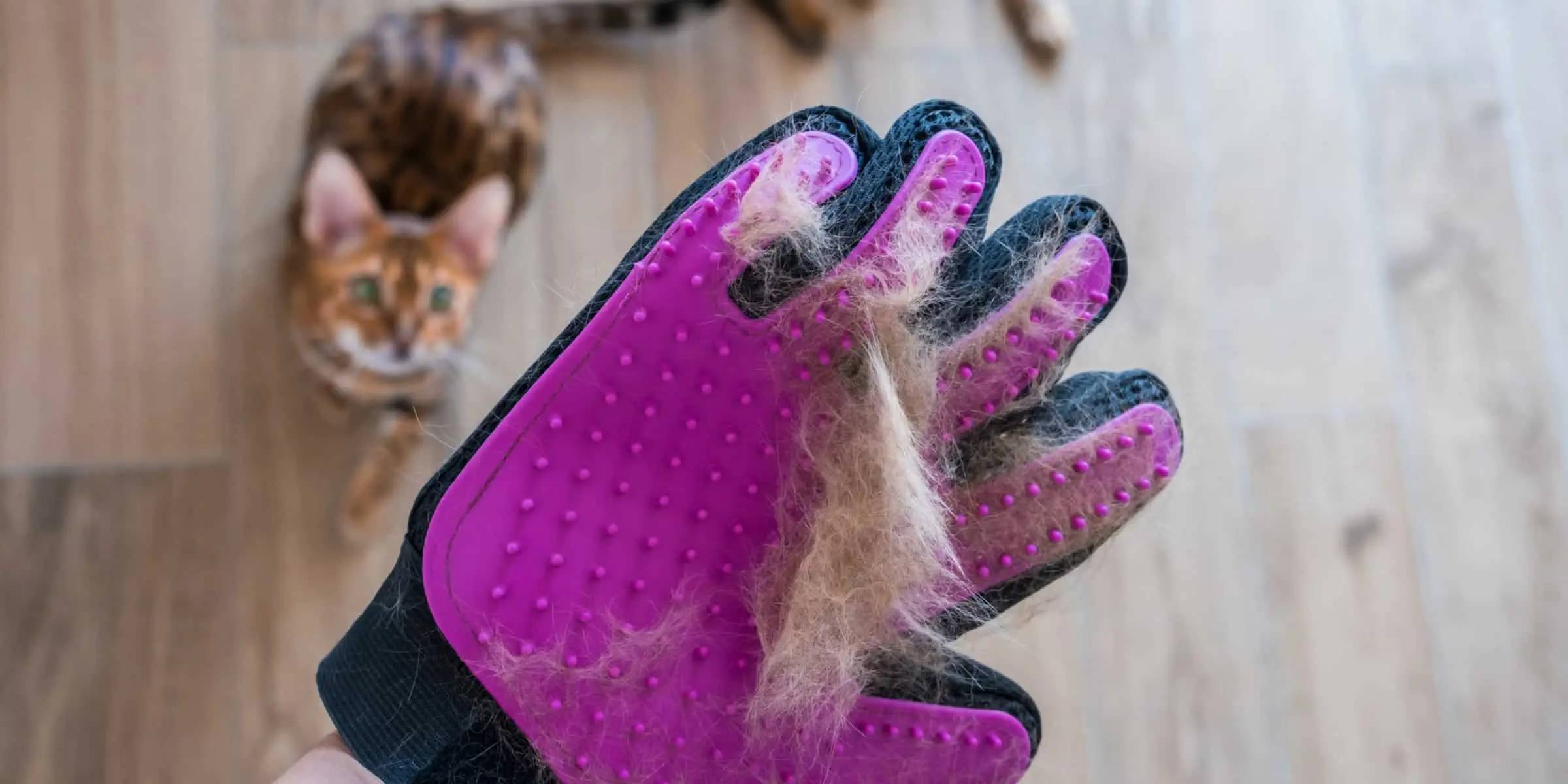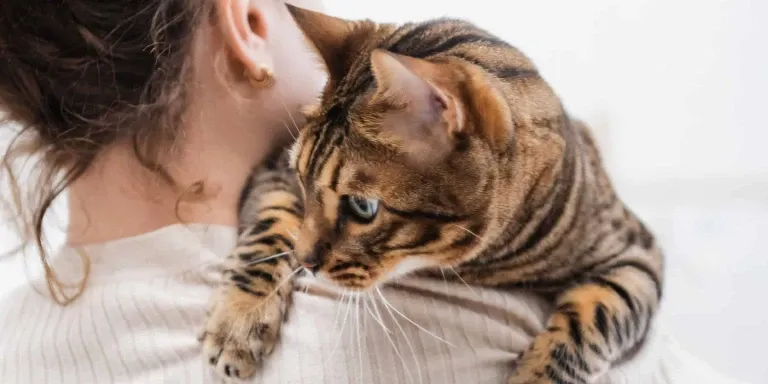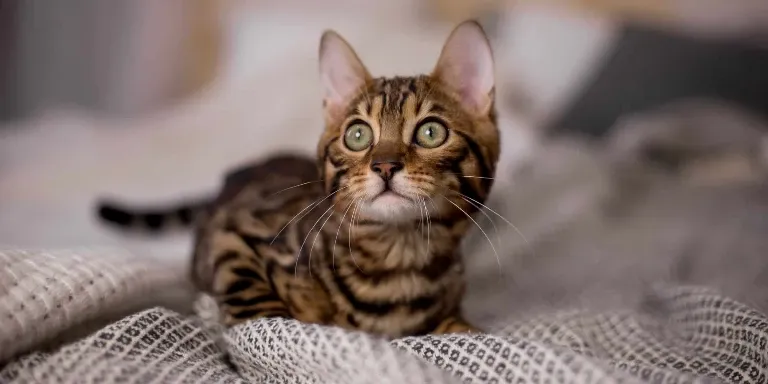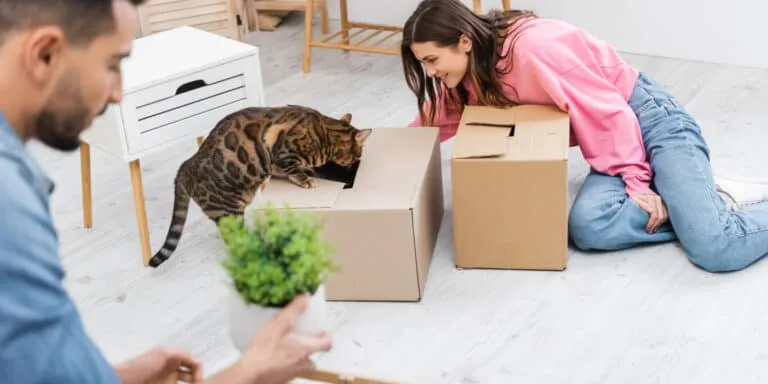The Best Fluffy Pancakes recipe you will fall in love with. Full of tips and tricks to help you make the best pancakes.

Are you considering bringing a Bengal cat into your home, but worried about the shedding? It’s understandable to have concerns about the amount of fur your new feline friend might leave behind.
Bengal cats are known for their beautiful coats, but they also have a reputation for shedding. Fortunately, with some understanding of their coat types and a few grooming techniques, you can manage shedding and keep your home fur-free.
Bengal cats shed moderately. They have a short, dense coat that does shed, but not as much as some other breeds. Regular grooming, such as brushing and bathing, can help reduce shedding and keep their coat healthy.
First, it’s important to understand the different coat types that Bengal cats can have. Bengal cats can have either a spotted or marbled coat, and their fur can be short or medium in length.
While all Bengal cats shed to some extent, the amount of shedding can vary based on their coat type and other factors. By learning more about your Bengal cat’s coat type and the factors that can affect shedding, you can be better prepared to manage shedding in your home.
Understanding Bengal Cat Coat Types
So, you’re probably wondering what type of coat your Bengal cat might have, huh?
Bengal cat fur patterns can be classified into two types: spotted and marbled. Spotted Bengals have coat patterns that resemble a leopard’s spots, while marbled Bengals have a swirling pattern that is reminiscent of marble.
Now, when it comes to shedding and grooming tips, Bengal cats are known to shed moderately. This means that you’ll need to brush your Bengal cat at least once a week to keep its coat healthy and shiny. Additionally, you should also invest in a good quality cat brush to make the grooming process easier and more effective.
Remember to be gentle when grooming your Bengal cat, as they have sensitive skin and may not like being brushed too aggressively. By following these tips, you can help reduce shedding and keep your Bengal cat looking and feeling their best.
Shedding in Bengal Cats
You’ll notice that your Bengal’s coat undergoes a seasonal shedding process, much like trees losing their leaves in the fall. This is a natural process that occurs in all cats as they prepare for the change in seasons. However, unlike other cat breeds, Bengal cats are known to shed less due to their short and sleek coat.
Despite their minimal shedding, Bengal cats still require regular grooming to maintain their shiny coat. Brushing their coat at least once a week helps to remove any loose hair and prevent matting. Additionally, incorporating a healthy diet and providing plenty of water can improve the overall health of your cat’s coat and reduce shedding.
By managing their shedding and grooming needs, you can help your Bengal cat maintain their stunning appearance while also promoting their overall health and well-being.
Factors That Affect Shedding
When it comes to shedding in Bengal cats, there are several factors that affect how much they shed. Your cat’s diet, grooming habits, and stress levels can all play a role in the amount of hair they leave behind.
Proper nutrition and regular grooming can help reduce shedding, while stress can exacerbate it. By understanding these factors, you can take steps to minimize shedding and keep your Bengal cat’s coat looking healthy and shiny.
Diet
Bengal cats require a balanced diet rich in protein to maintain a healthy coat and minimize shedding. The quality of the cat food you give to your Bengal cat is crucial in keeping their fur healthy and shiny.
Feeding your Bengal cat a diet that’s high in protein will help keep their fur from shedding excessively. When it comes to protein intake, Bengal cats need a high percentage of animal-based protein in their diet. This is because animal-based proteins contain all the essential amino acids that your cat needs to maintain a healthy coat.
Additionally, protein helps to repair and grow new hair follicles, which ultimately reduces shedding. Therefore, it’s essential to choose a cat food that’s high in protein to keep your Bengal cat’s coat healthy and shiny, and to keep shedding to a minimum.
Grooming
To keep your Bengal cat’s coat healthy and shiny, regular grooming is crucial. This breed is known for its short, dense coat and minimal shedding, but they still require regular grooming to prevent matting, remove loose hair, and distribute natural oils throughout their coat.
Brush your Bengal cat at least once a week using a slicker brush or a rubber grooming glove. This will help to remove dead hair and prevent hairballs, which can be a common problem in cats that groom themselves excessively.
If you’re looking for shedding solutions, consider investing in a high-quality de-shedding tool. These tools can help to remove loose hair without damaging your cat’s coat. Additionally, feeding your Bengal cat a healthy diet can also help to reduce shedding. Look for cat food that is high in protein and omega-3 fatty acids, which can help to promote a healthy coat.
Finally, if your Bengal cat is shedding excessively, consider consulting with a veterinarian. They can help to rule out any underlying medical conditions that may be causing excessive shedding.
Stress
When it comes to grooming your Bengal cat, you may have to deal with shedding. However, shedding is just one of the many factors that can affect your cat’s coat. Another important factor is stress management.
Like humans, cats can experience stress and anxiety, and it can have a significant impact on their overall health and well-being. Stress can manifest in many ways in cats, including changes in behavior, appetite, and even physical appearance.
To help your Bengal cat manage stress, there are several things you can do. Firstly, ensure that your cat has a safe and comfortable environment to live in. Secondly, provide them with plenty of mental and physical stimulation through play and exercise. Finally, consider incorporating natural remedies, like pheromone sprays or herbal supplements, to help calm and soothe your cat.
By taking these steps, you can help your Bengal cat lead a happy, healthy, and stress-free life. Feeling overwhelmed? Don’t worry, you’re not alone. Check out these tips for managing your own stress and anxiety.
Remember, your cat takes cues from you. If you’re feeling stressed, it can impact your cat’s mood as well. Consider seeking professional help if your cat’s stress levels persist or worsen over time. A veterinarian or animal behaviorist can offer tailored advice and support.
Grooming Your Bengal Cat
When it comes to grooming your Bengal cat, there are a few key points to keep in mind. First, brushing techniques are important to keep their fur healthy and prevent matting.
Second, bathing and drying can help keep their coat clean and shiny, but it’s important to do it properly to avoid stress for your cat.
Finally, trimming nails and fur is important for the health and safety of your Bengal, and should be done regularly.
By following these tips, you can help keep your Bengal cat happy and healthy.
Brushing Techniques
You can easily reduce shedding by brushing your Bengal cat regularly, right? Proper tools and frequency of grooming are key to keeping your cat’s shedding under control. Use a brush with soft bristles or a rubber brush to gently remove loose fur, dirt, and dander. Depending on the length and thickness of your cat’s coat, you may need to brush them once or twice a week.
When brushing your Bengal cat, start at the head and work your way down to the tail. Use long, sweeping strokes and be gentle around sensitive areas like the belly and legs. Don’t forget to brush your cat’s undercoat, which is where most of the shedding occurs.
By removing loose fur before it has a chance to fall out on its own, you can significantly reduce the amount of hair your cat leaves on your furniture and clothing. With consistent grooming techniques and shedding prevention practices, you can enjoy a cleaner, happier home with your beloved Bengal cat.
Bathing and Drying
To keep your Bengal looking and feeling fresh, it’s important to give them a bath and dry them off properly. Bathing techniques for Bengal cats require a gentle touch, as they are known to be sensitive to water.
Start by filling a basin with lukewarm water and adding a small amount of cat-friendly shampoo. Gently place your Bengal into the water and use a cup or a showerhead to wet their fur thoroughly. Be sure to avoid getting water in their ears and eyes.
After shampooing, rinse your Bengal thoroughly with lukewarm water to remove all the soap residue. Once the bathing process is complete, it’s important to dry your Bengal off properly to avoid any discomfort or illness.
Drying methods may vary depending on your Bengal’s comfort level. You can use a towel to blot their fur gently or use a hairdryer set on low heat to blow dry their fur. Remember to keep the dryer at a safe distance and avoid overheating your Bengal.
By following these bathing and drying techniques, you can help your Bengal look and feel their best.
Benefits of Bathing:
- Improved Skin and Coat Health
- Reduced Shedding
Benefits of Drying:
- Prevents Hypothermia
- Prevents Fungal Infections
Trimming Nails and Fur
Keeping your Bengal’s nails and fur trimmed is essential for their health and comfort. Proper equipment, such as nail clippers and a good pair of grooming scissors, are necessary to ensure a smooth and safe trimming process.
Bengal cats have sharp claws that can easily snag on furniture or scratch their owners, so it’s important to trim their nails regularly. Overgrown nails can cause discomfort and even lead to infections if they become too long.
When it comes to trimming your Bengal’s fur, it’s important to take extra care as their coat is unique and requires special attention. A professional grooming session can be helpful in understanding the proper technique for trimming their fur. However, if you choose to do it yourself, make sure to use sharp scissors and start from the head and work your way down the body, making sure to avoid any sensitive areas.
Regular grooming can help reduce shedding and keep your Bengal’s coat healthy and shiny. By keeping their nails and fur trimmed, your Bengal will not only look great but also feel comfortable.
Managing Shedding in Your Home
Reducing the amount of fur in your home can be accomplished by regularly brushing your Bengal cat, who’s known to shed less than other breeds. Bengals shed about half as much as a domestic shorthair.
By brushing them regularly, you can remove loose fur before it falls off and ends up all over your furniture and floors. A slicker brush or a comb with widely spaced teeth is recommended to remove loose fur efficiently.
There are also shedding management products available on the market, such as lint rollers, vacuum cleaners with specific attachments, and air purifiers. These products can help to keep your home clean and free of pet hair.
However, it’s important to note that shedding is a natural process for cats, and it’s impossible to eliminate it completely. By incorporating regular grooming and using shedding management products, you can significantly reduce the amount of fur in your home and make it a more comfortable and pleasant living space for both you and your Bengal cat.
Understanding Allergies and Shedding
If you’re someone who suffers from allergies, understanding why cats shed their fur can help you better manage your symptoms. Bengal cats shed their fur just like any other cat breed, and this shedding can trigger allergic reactions in some people.
Here are some things to keep in mind when it comes to understanding cat allergies and managing shedding allergies:
- Cat allergies are caused by a protein called Fel d 1, which is found in a cat’s saliva, urine, and skin.
- When a cat sheds its fur, it can spread this protein throughout your home, triggering allergic reactions.
- Regular grooming, including brushing and bathing your Bengal cat, can help reduce the amount of loose fur and dander in your home.
- Investing in an air purifier can help filter out allergens from the air, making it easier for you to breathe.
- If you’re particularly sensitive to cat allergies, you may want to consider allergy shots or other medical treatments to help alleviate your symptoms.
By understanding cat allergies and managing shedding allergies, you can minimize the impact that your Bengal cat’s shedding has on your health and well-being. With a little bit of effort, you can enjoy the companionship of your furry friend without compromising your freedom to breathe easy.
Tips for Minimizing Shedding
To minimize shedding, shedding prevention is key. Groom your furry friend daily using a brush with soft bristles to remove loose fur and distribute natural oils throughout their coat. This helps prevent fur from accumulating in your home and on your clothes.
You can also give your cat a bath once a month to help remove excess fur and keep their coat healthy. Shedding management is also important. Consider investing in a good vacuum cleaner to help keep your home fur-free. Use lint rollers or sticky tape to remove fur from clothing and furniture.
If your cat sheds excessively, consult with your vet to rule out any underlying health issues. By taking steps to minimize shedding, you can enjoy a cleaner, more comfortable home while still providing love and care for your furry friend.
Final Thoughts and Considerations
When it comes to owning a cat, it’s important to understand their needs and choose the right breed for your lifestyle. This means taking into consideration factors such as the cat’s activity level, grooming needs, and temperament.
By understanding your cat’s needs and choosing the right breed, you can ensure that both you and your feline companion will live a happy and healthy life together.
Final thoughts and considerations: It’s important to also consider the responsibilities of cat ownership, such as providing proper nutrition, regular veterinary care, and a safe and comfortable living environment. Overall, owning a cat can be a rewarding experience for both you and your furry friend.
The Importance of Understanding Your Cat’s Needs
Understanding your Bengal cat’s needs is crucial in ensuring their health and happiness, so take the time to learn about their shedding habits and how to properly care for their coat.
As a cat owner, it’s important to understand that shedding is a natural process for cats and it’s their way of getting rid of old and dead fur. However, excessive shedding can be a sign of health concerns such as allergies, skin irritations, or even stress. Therefore, it’s important to monitor your cat’s shedding habits and consult with a veterinarian if you notice any changes.
To properly care for your Bengal cat’s coat, you should establish a regular grooming routine that includes brushing and bathing. Brushing your cat’s fur not only helps to remove loose hair and prevent mats, but it also stimulates blood flow and distributes natural oils throughout their coat.
Bathing should only be done occasionally and with a gentle cat-specific shampoo to avoid drying out their skin. By understanding and addressing your Bengal cat’s shedding habits and coat care needs, you can help them maintain a healthy and comfortable life.
Choosing the Right Breed for Your Lifestyle
Deciding on the perfect breed of feline companion requires careful consideration of your lifestyle and personality. While all cats have their unique personalities, different breeds have distinct needs and temperaments that may not suit everyone. When choosing a breed, it’s crucial to think about whether you want an indoor or outdoor cat and how much activity you’re willing to provide.
Here are some factors to consider when choosing the right breed for your lifestyle:
- Indoor vs outdoor: Some breeds are well-suited to living indoors, while others need access to the outdoors to thrive. Indoor cats often need more stimulation and playtime to keep them happy, while outdoor cats tend to be more independent but also face more risks such as traffic and predators.
- Activity levels: Some breeds are more active than others and require plenty of playtime and exercise. If you’re looking for a playful and energetic cat, consider breeds like Bengals, Abyssinians, and Siamese. However, if you prefer a more laid-back feline companion, consider breeds like Persians, Ragdolls, and British Shorthairs.
Ultimately, choosing the right breed of cat for your lifestyle is crucial for ensuring a happy and healthy relationship. Take the time to research different breeds and their needs before making a decision. Remember, your cat’s happiness and wellbeing should always come first.
Does Shedding Affect the Affectionate Nature of Bengal Cats?
Bengal cats have an affectionate personality that is not typically affected by shedding. Regular grooming can minimize shedding, ensuring that their affectionate nature remains intact. Despite shedding, Bengal cats are known for their loving and friendly demeanor, making them great companions for cat lovers.
Conclusion
Congratulations on making it to the end of this informative article on Bengal cat shedding! Now that you know more about the different coat types and factors that can affect shedding in these beautiful cats, it’s time to put that knowledge into action.
Remember to groom your Bengal cat regularly and manage shedding in your home to keep it under control. If you or someone in your household has allergies, take extra precautions to minimize shedding and keep your home clean.
And don’t forget to enjoy the unique and stunning beauty of your Bengal cat, shedding and all!
In conclusion, shedding is a natural and unavoidable part of owning a Bengal cat, but with the right care and attention, it doesn’t have to be a major problem. By understanding your cat’s specific coat type and taking steps to manage shedding, you can keep your home clean and comfortable for both you and your feline companion.
So go ahead, snuggle up with your Bengal cat and enjoy all the love and joy they bring to your life!








